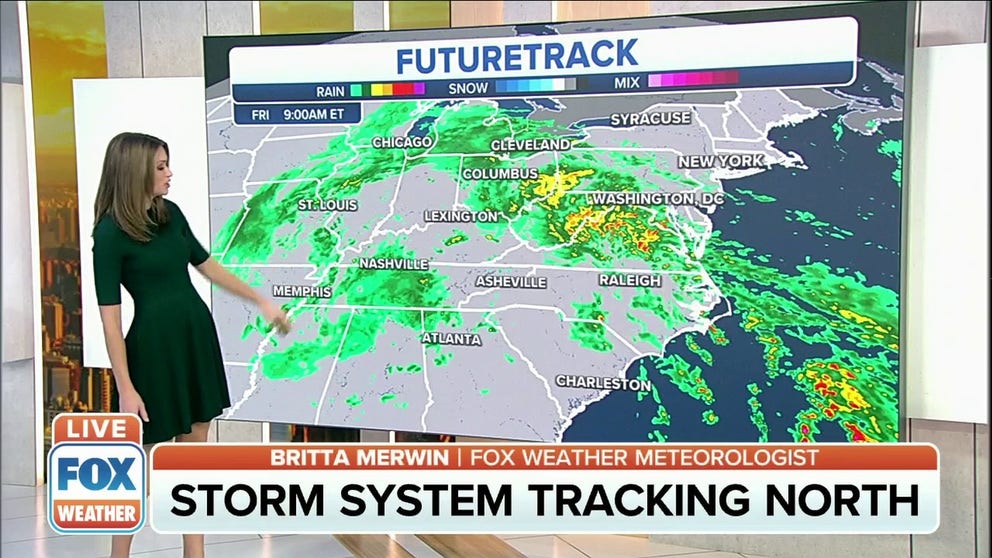Strong onshore winds cause worst coastal flooding since 2003 in parts of mid-Atlantic
Some locations could experience flooding for eight consecutive high tides
Storm bringing heavy rain, coastal flooding and gusty winds to Northeast
Large storm system brings heavy rain, coastal flooding and gusty winds from mid-Atlantic to Northeast.
The worst coastal flooding since Hurricane Isabel in 2003 impacted parts of the mid-Atlantic as strong onshore winds associated with a large Eastern storm system piled water into the region's bays.
Tidal levels near Washington, DC reached major flood stage on Friday afternoon.
The nation's capital is only one of many areas meteorologists are monitoring for major tidal flooding. Over 100 gauges from Virginia to New York are at or expected to over flood stage.
WATCH: HIGH WINDS CAUSE COASTAL FLOODING IN MID-ATLANTIC, NORTHEAST

Many river gauges were at flood stage on Friday evening.
(FOX Weather)
Coastal areas can experience various kinds of flooding. One type is tidal flooding, which is typically just a nuisance that occurs during extremely high tides, with seawater spilling onto land and inundating low-lying areas along the coastline until the tide recedes, according to the Centers for Disease Control and Prevention.
Other types of coastal flooding include moderate and major floods that can be caused by heavy rain, storm surge, high winds and large waves spawned by a low-pressure system, the CDC said.
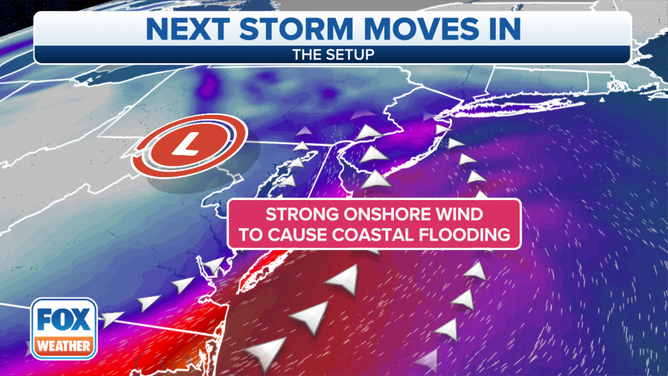
(FOX Weather)
Our current storm system moving from the Ohio Valley toward the Northeast is expected to produce moderate and major coastal flooding in the mid-Atlantic bays into early Saturday, triggered by easterly winds gusting 50 to 60 mph off the Atlantic Ocean.
The National Weather Service has issued Wind Advisories and High Wind Warnings for parts of the mid-Atlantic through early Saturday morning.
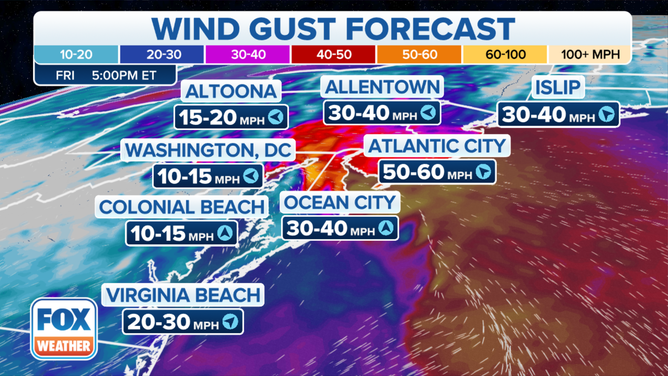
Wind gust forecast in the mid-Atlantic Friday evening, Oct. 29, 2021.
(FOX Weather)
Coastal Flood Warnings and Advisories have been issued by the National Weather Service from New Jersey and Long Island to the Virginia Tidewater into early Saturday afternoon.
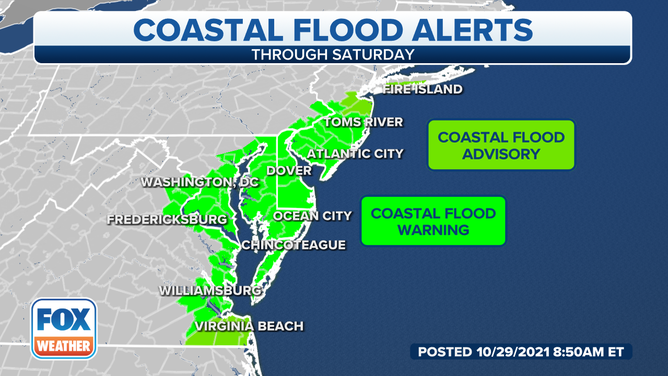
Coastal flood alerts are in effect from New Jersey to the Virginia Tidewater.
(FOX Weather)
The highest tides and greatest coastal flooding risk will occur from Friday afternoon through Friday night or very early Saturday morning, particularly at times of high tide. However, additional minor to moderate coastal flooding is possible even at low tide in some spots.
WHY THE SCIENCE OF SUPERSTORM SANDY WAS BOTH NORMAL AND ABNORMAL
Times of high tide for select locations along the Chesapeake and Delaware bays are shown in the table below.
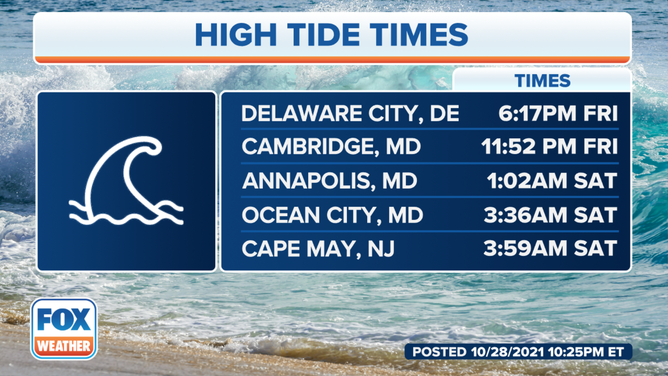
(FOX Weather)
Record flooding of 9.5 feet is predicted for the upper Delaware Bay at Reedy Point, Delaware, on Friday evening, according to the National Weather Service. At this level, widespread roadway flooding begins near the bay, the river and the tidal tributaries in New Castle County, Delaware, and Salem County, New Jersey. Additionally, vulnerable homes and businesses may be damaged as water levels rise. Numerous roads will likely become impassable, and some neighborhoods may be isolated. The floodwaters will become a danger to anyone who attempts to cross on foot or in a vehicle, the NWS said.
HOW FLOODWATER CAN MAKE YOU VERY SICK
Some locations could experience flooding for eight consecutive high tides, making this an exceptionally long-duration event.
It might take until Sunday for winds to finally shift to an offshore direction and allow water to start flowing back toward the Atlantic again.
A 2018 NOAA report found the frequency of high-tide flooding in the mid-Atlantic doubled from an average of three days per year to six in a 2000-2015 period of study.
Sea-level rise caused by climate change is the main culprit for increased high-tide flooding events along the East Coast, NOAA said. By 2030, it's forecast to be two to three times more frequent than it is now. And by 2050, it might occur 25 to 75 days per year, depending on location.
